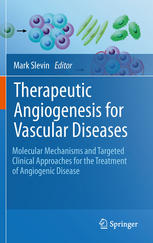

Most ebook files are in PDF format, so you can easily read them using various software such as Foxit Reader or directly on the Google Chrome browser.
Some ebook files are released by publishers in other formats such as .awz, .mobi, .epub, .fb2, etc. You may need to install specific software to read these formats on mobile/PC, such as Calibre.
Please read the tutorial at this link: https://ebookbell.com/faq
We offer FREE conversion to the popular formats you request; however, this may take some time. Therefore, right after payment, please email us, and we will try to provide the service as quickly as possible.
For some exceptional file formats or broken links (if any), please refrain from opening any disputes. Instead, email us first, and we will try to assist within a maximum of 6 hours.
EbookBell Team

4.3
88 reviewsAngiogenesis is the growth of new blood vessels and is a key process which occurs during pathological disease progression. Excessive and damaging angiogenesis occurs in diseases such as cancer, diabetic retinopathies, age-related macular degeneration and atherosclerosis. In other diseases such as stroke and myocardial infarction, insufficient or improper angiogenesis results in tissue loss and ultimately higher morbidity and mortality. In this book we will begin by providing the reader with an overview of the process of angiogenesis including normal embryological development of blood vessels. The following chapters will each focus on a key angiogenic disease incorporating current scientific knowledge concerning the causes of activation of the “angiogenic switch”, pathological consequences, current treatment options and future perspectives. Where appropriate, results from pre-clinical trials, novel imaging modalities and nanotechnological approaches will be incorporated into these sections. Finally, since it is now believed that the process of angiogenesis operated via different signalling mechanisms in different vascular beds, we will discuss our current understanding of this phenomenon. The target audience for this book would include researchers in all the basic sciences; post-graduate students at Universities and Institutes; pharmaceutical industries; clinicians working in vascular biology or tissue imaging; pathologists; neurologists; tumour biologists; ophthalmologists and cardiologists.